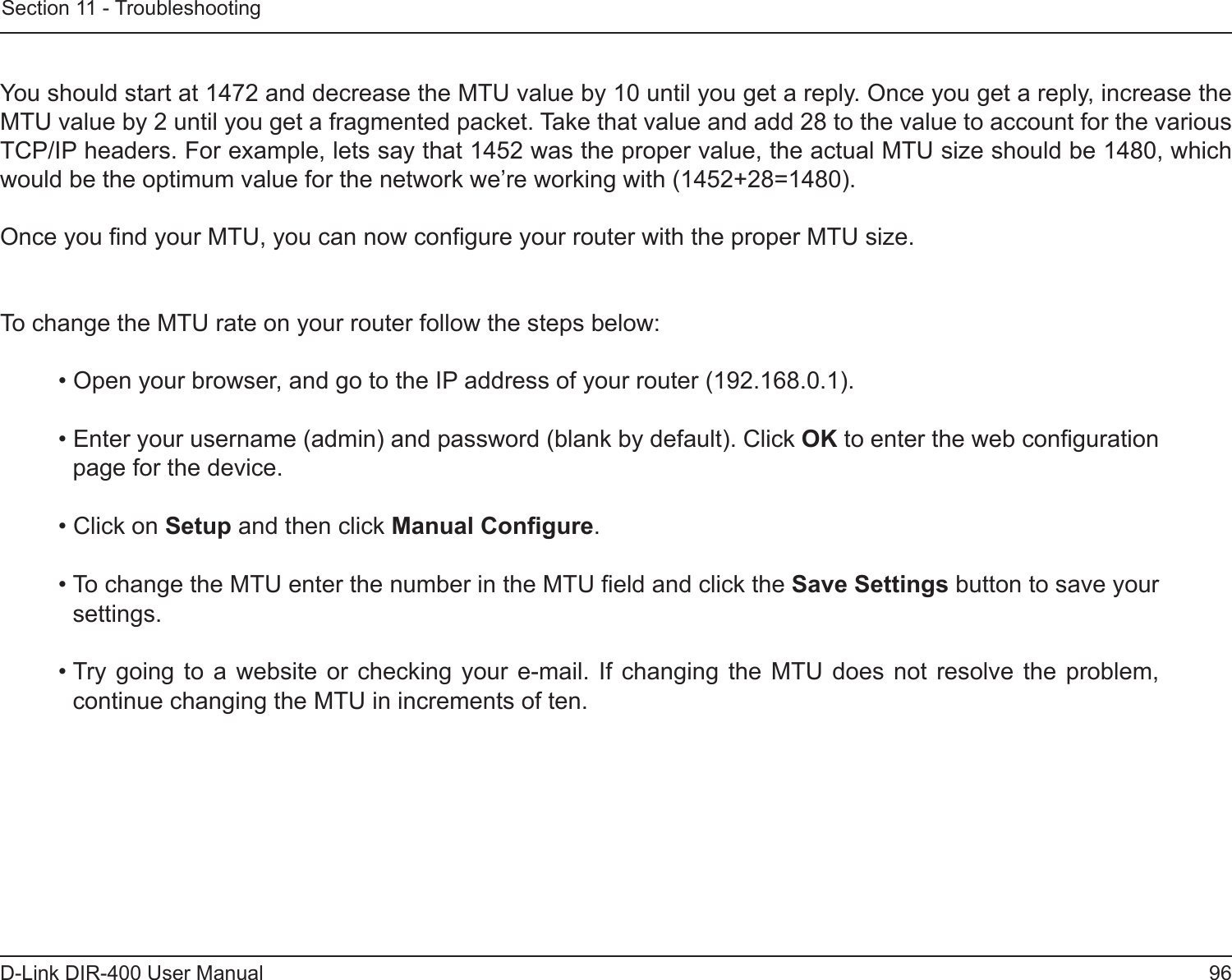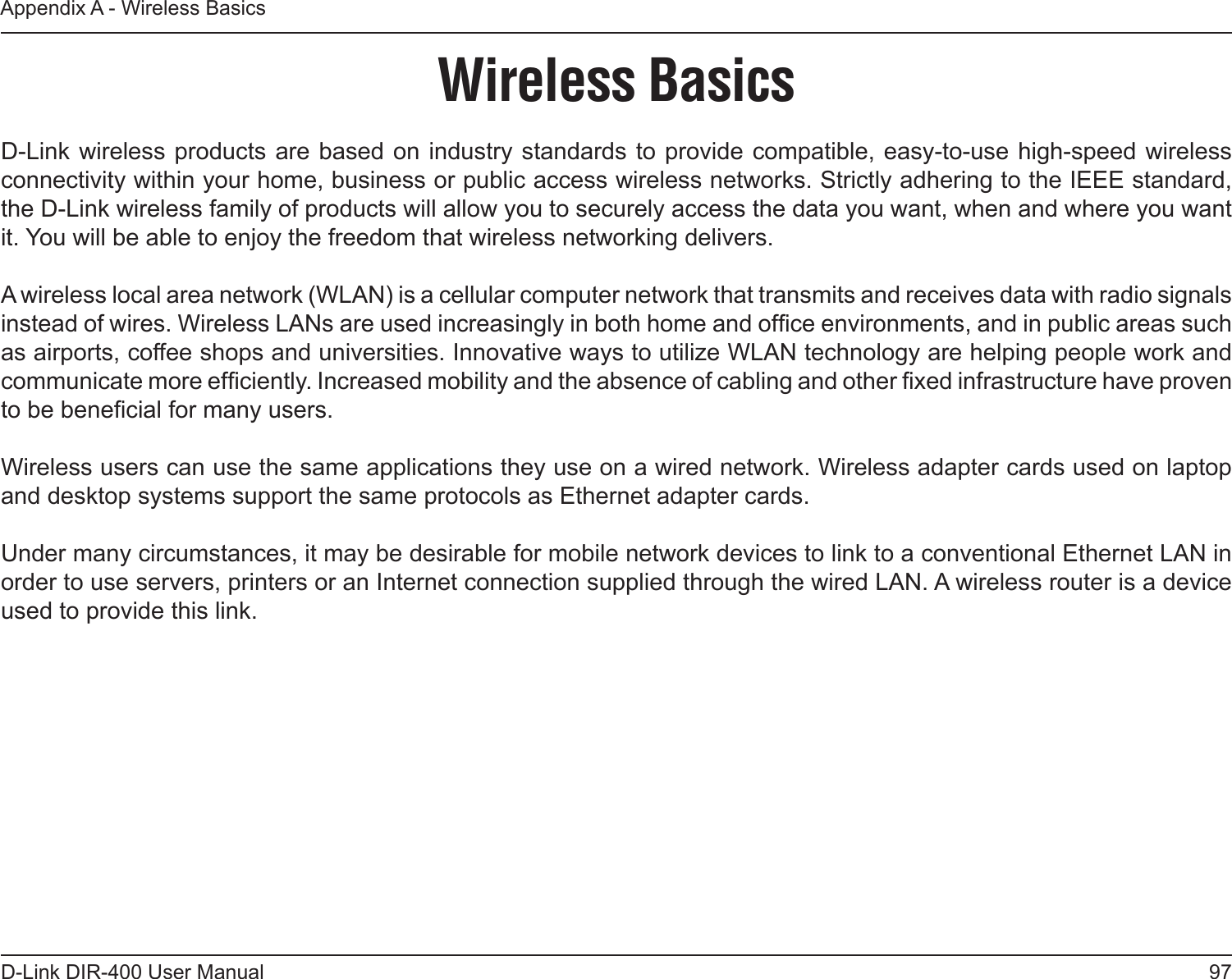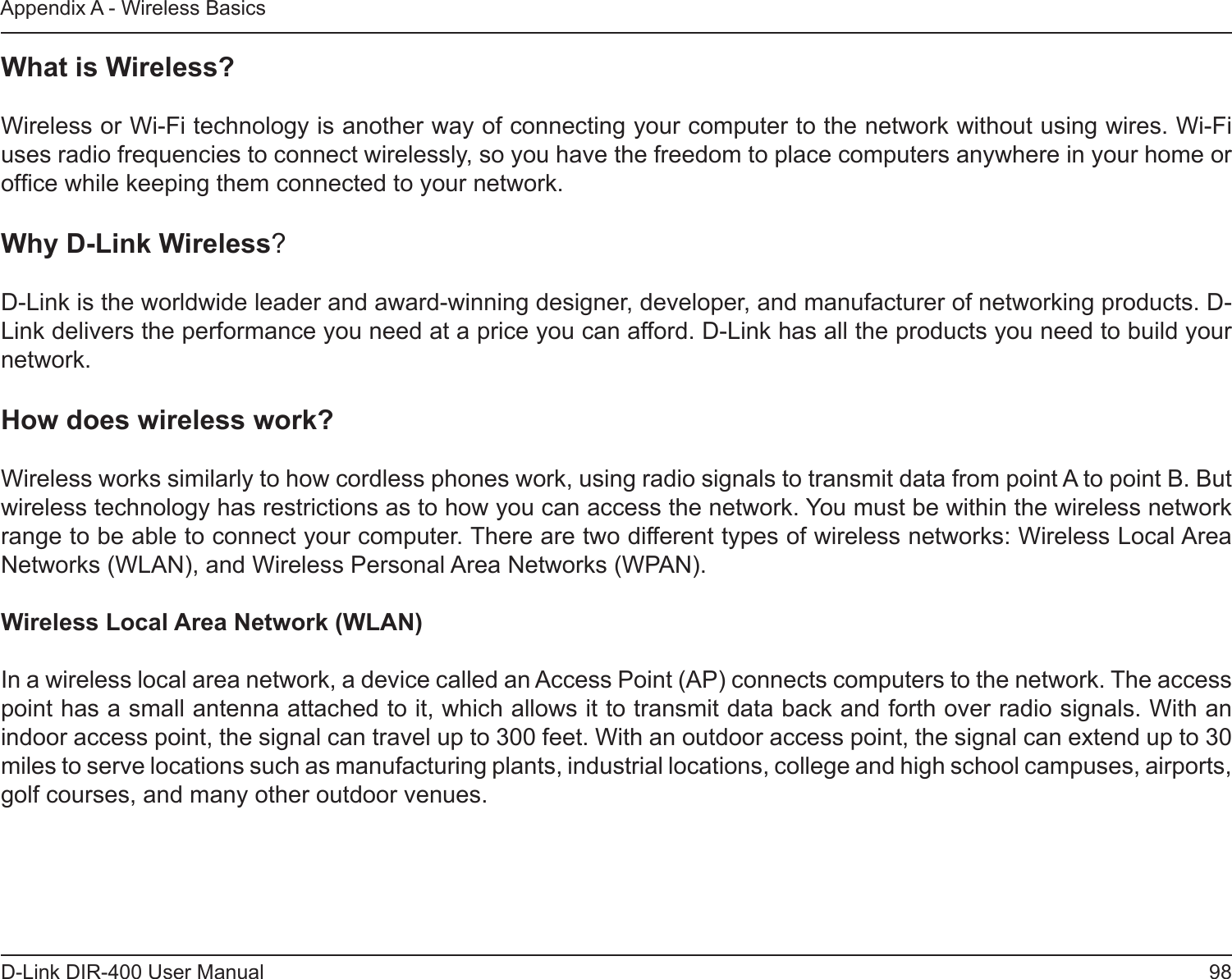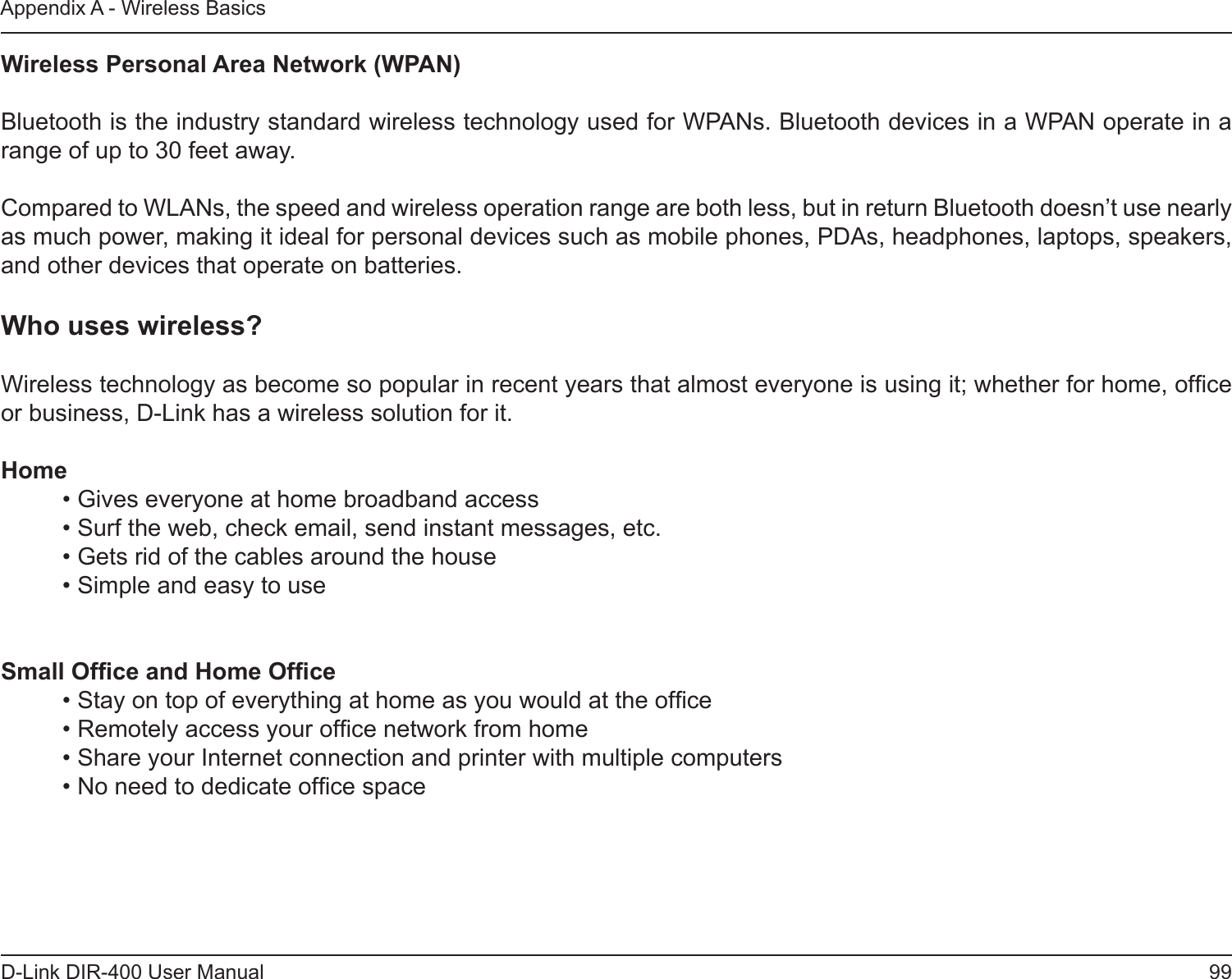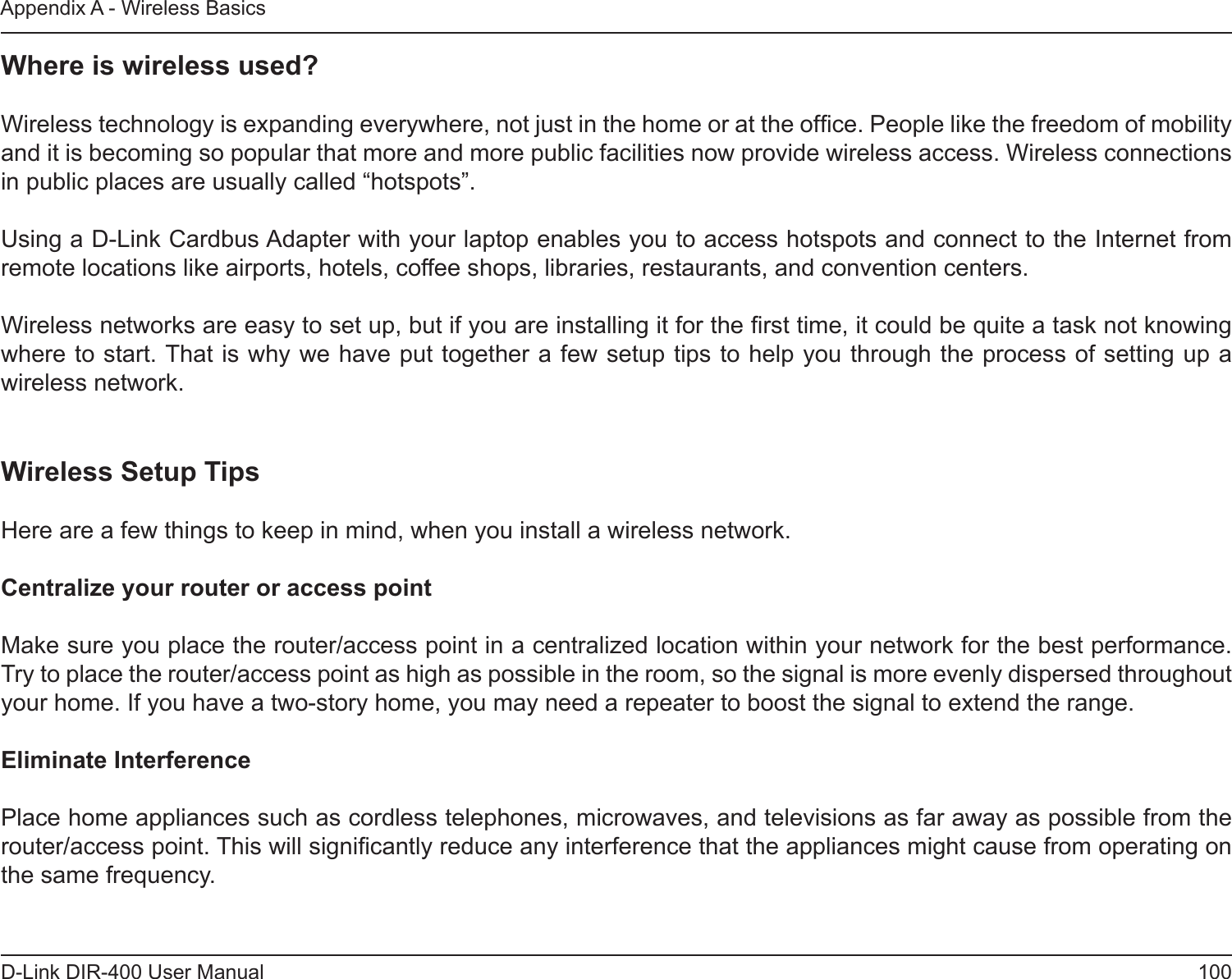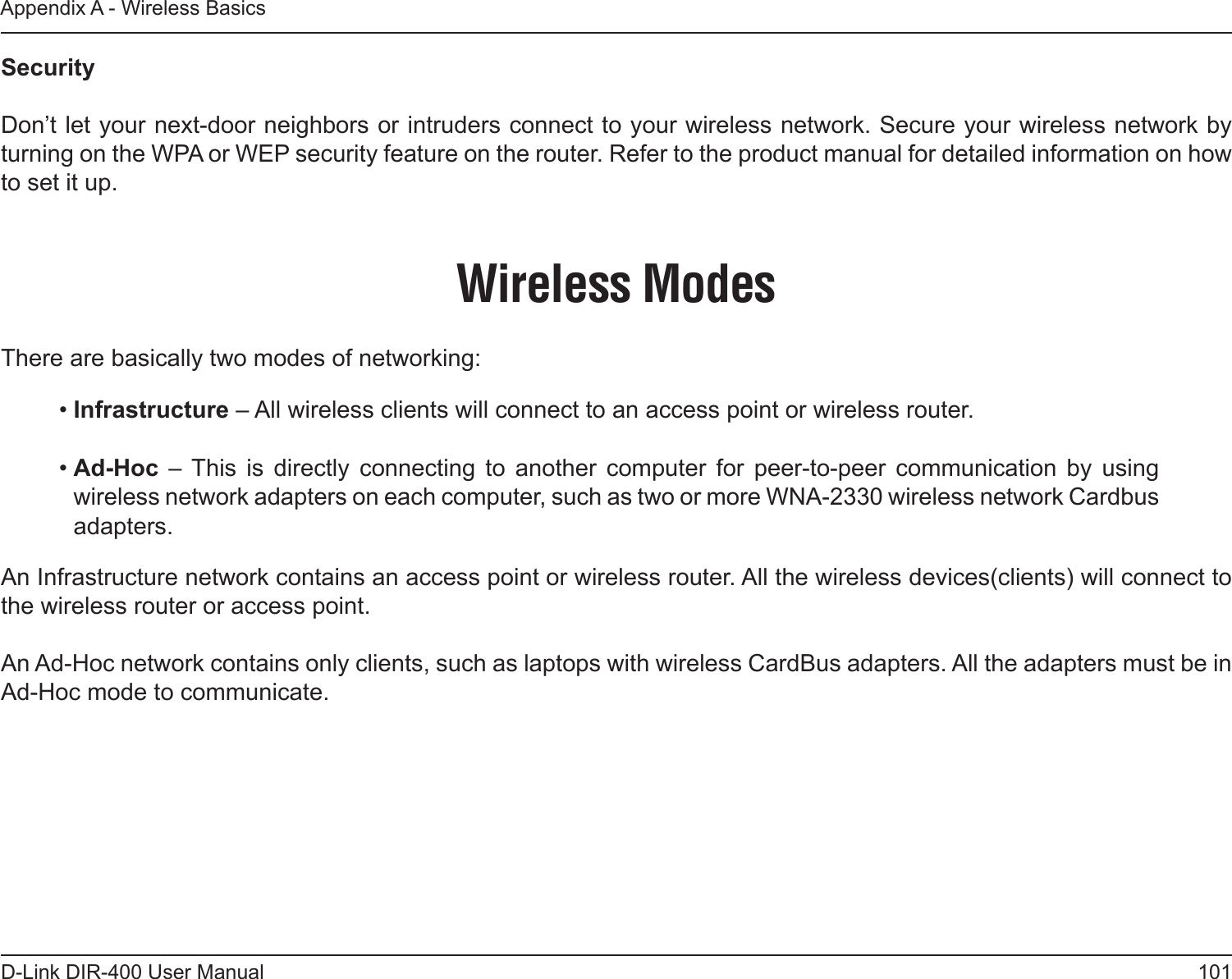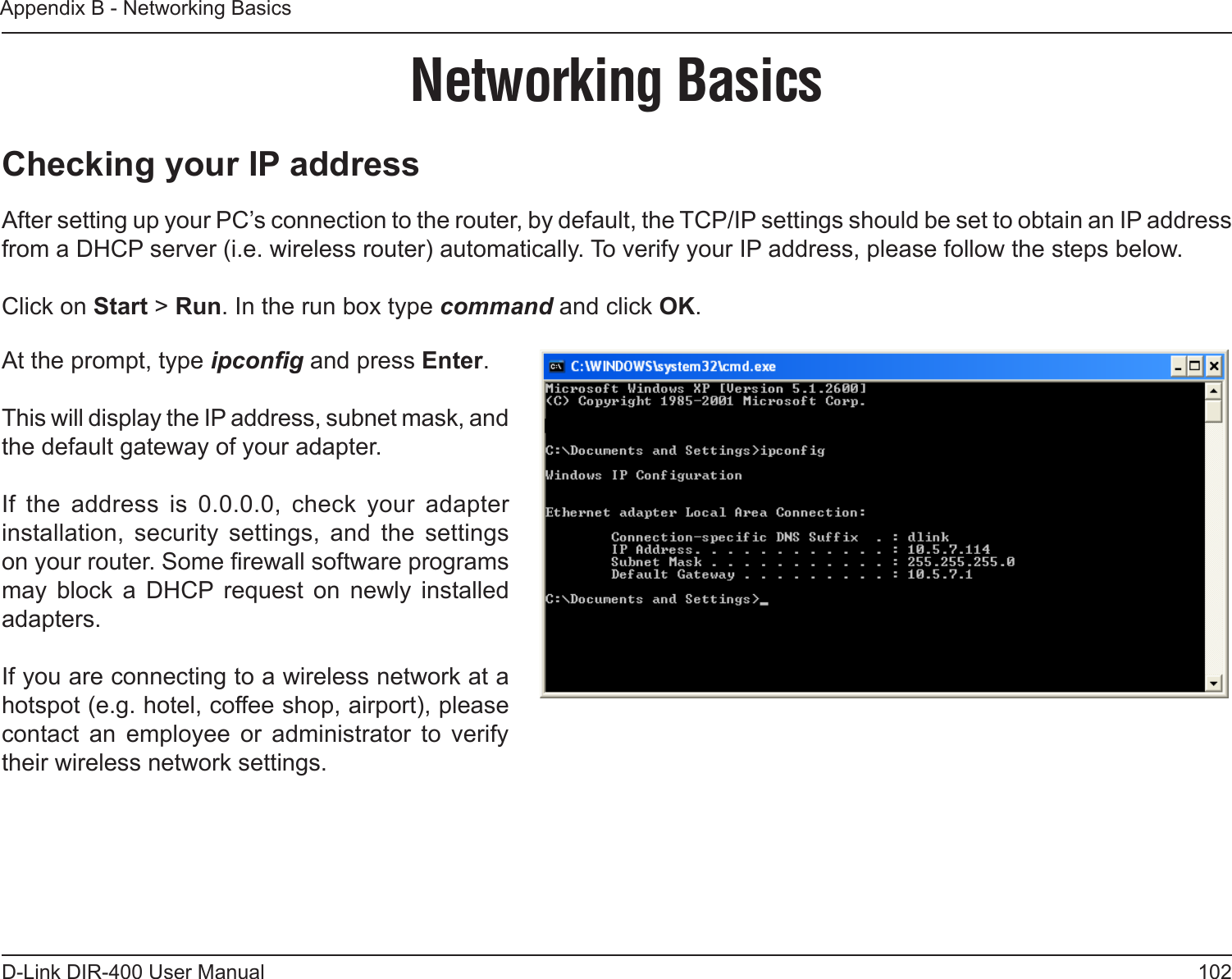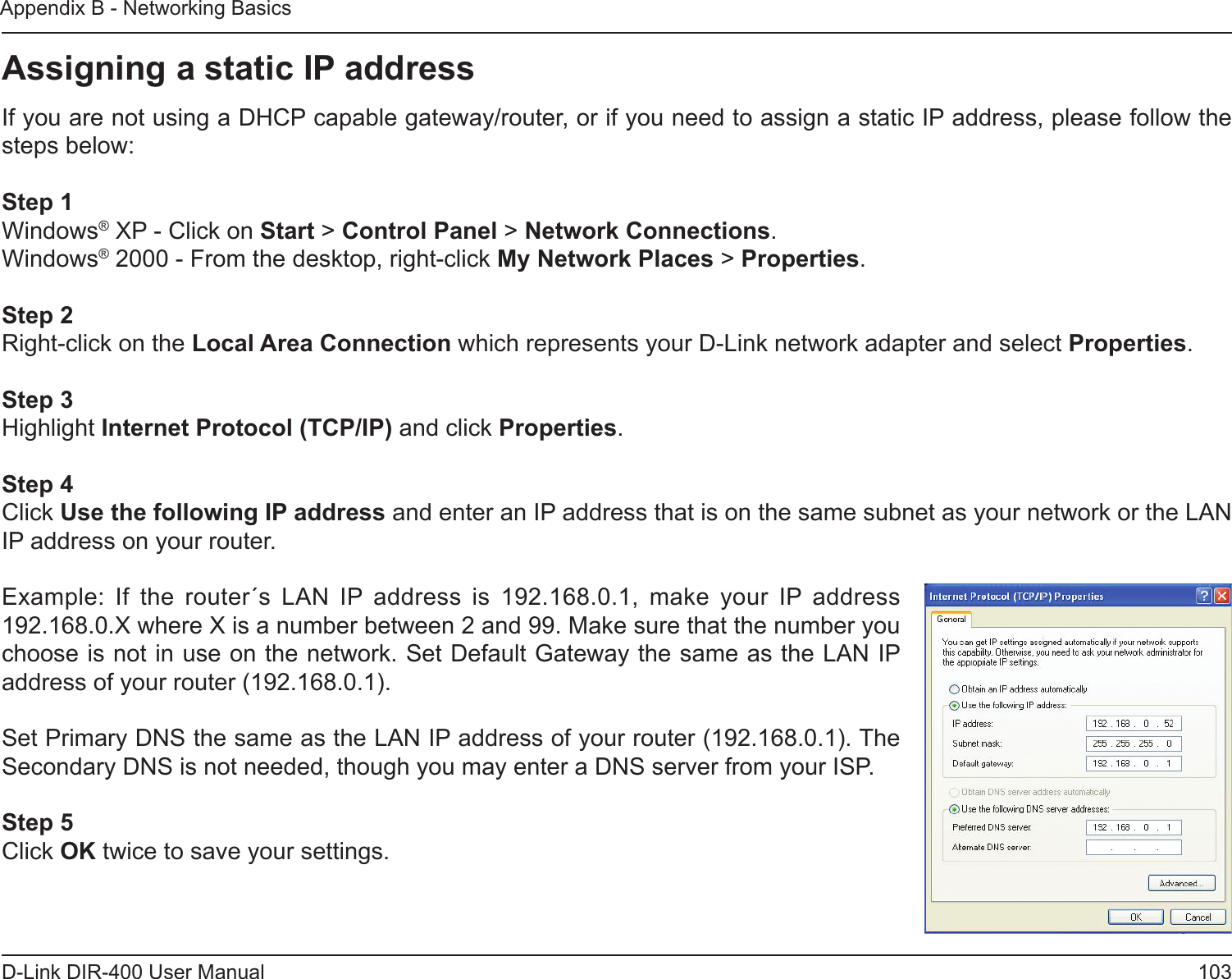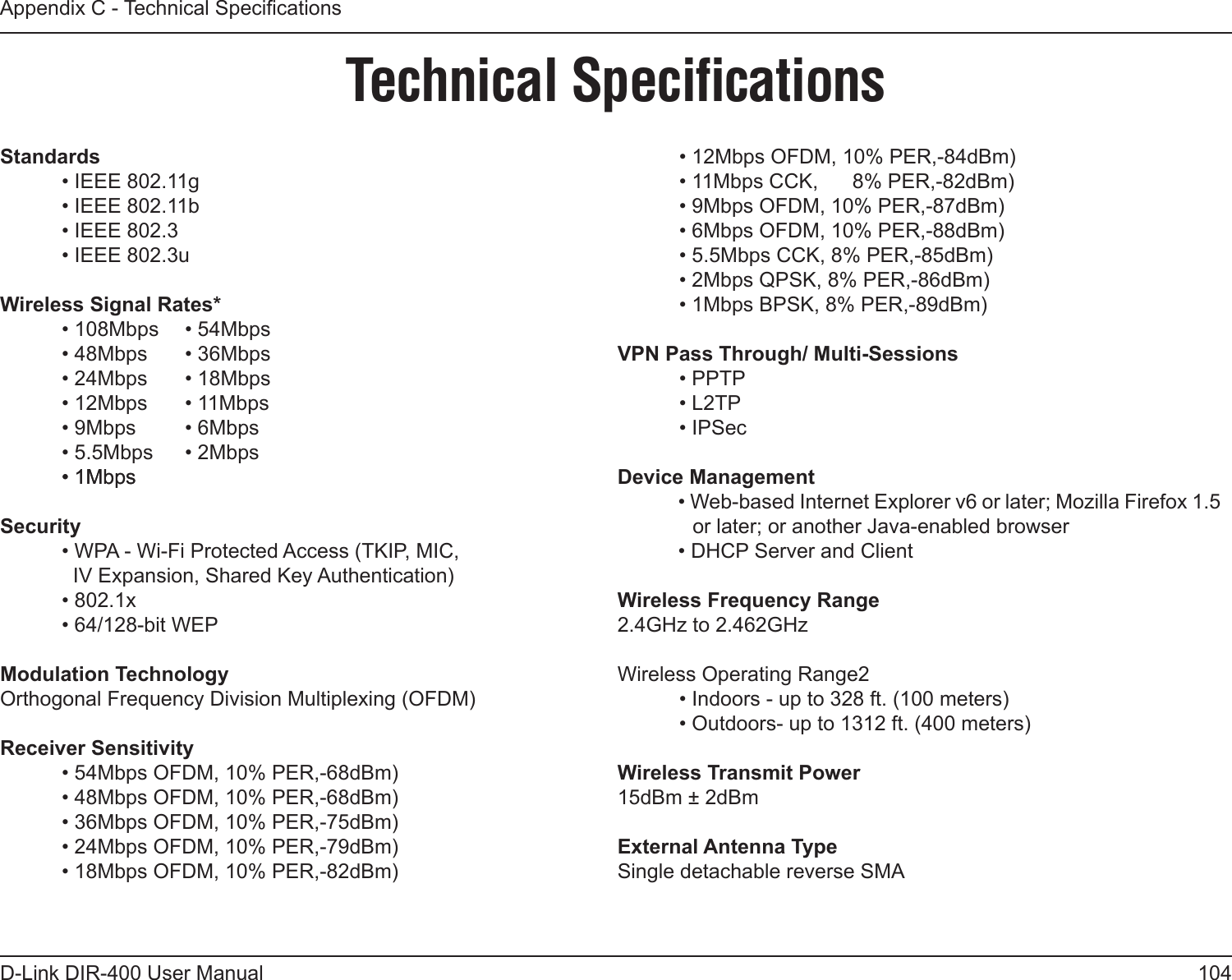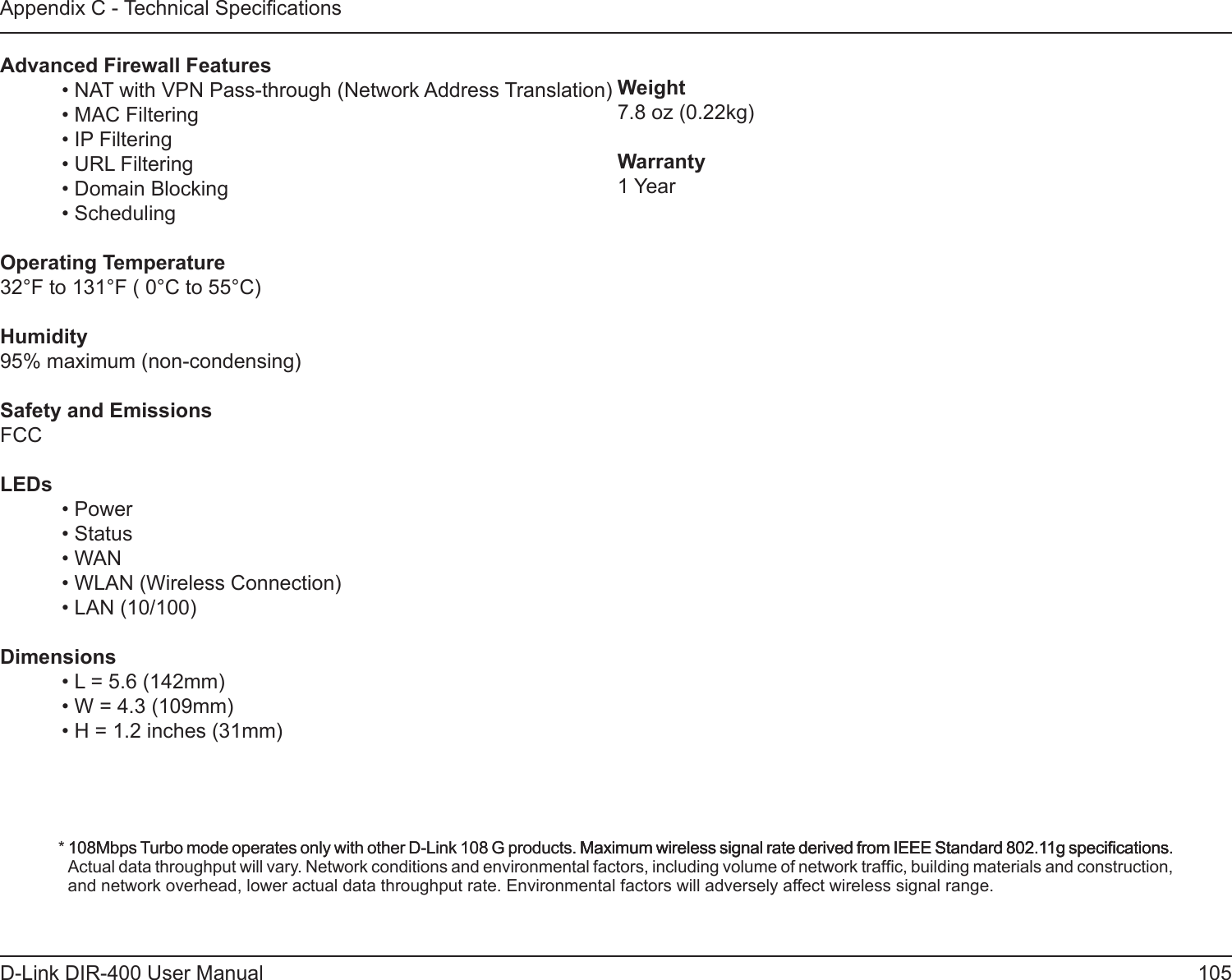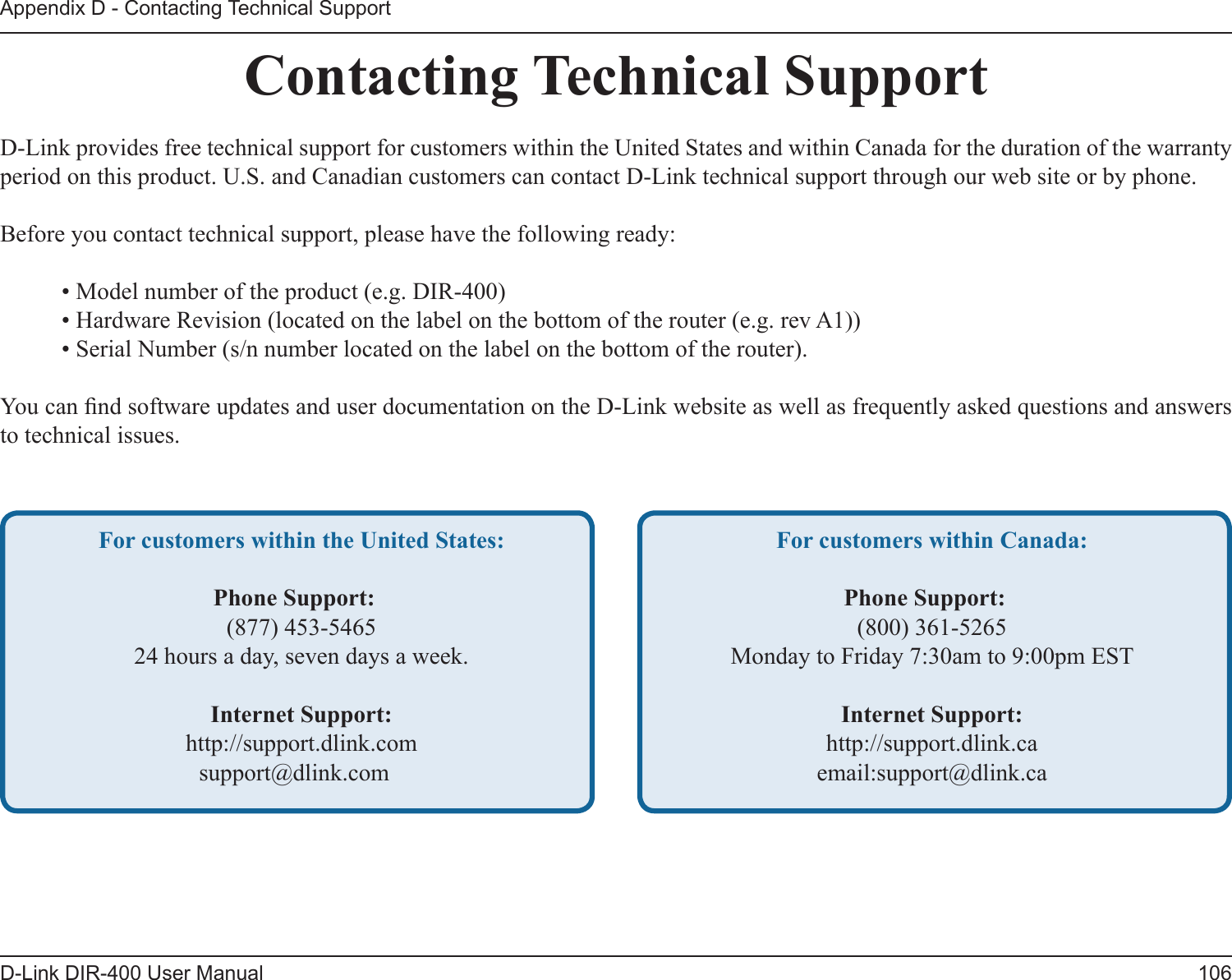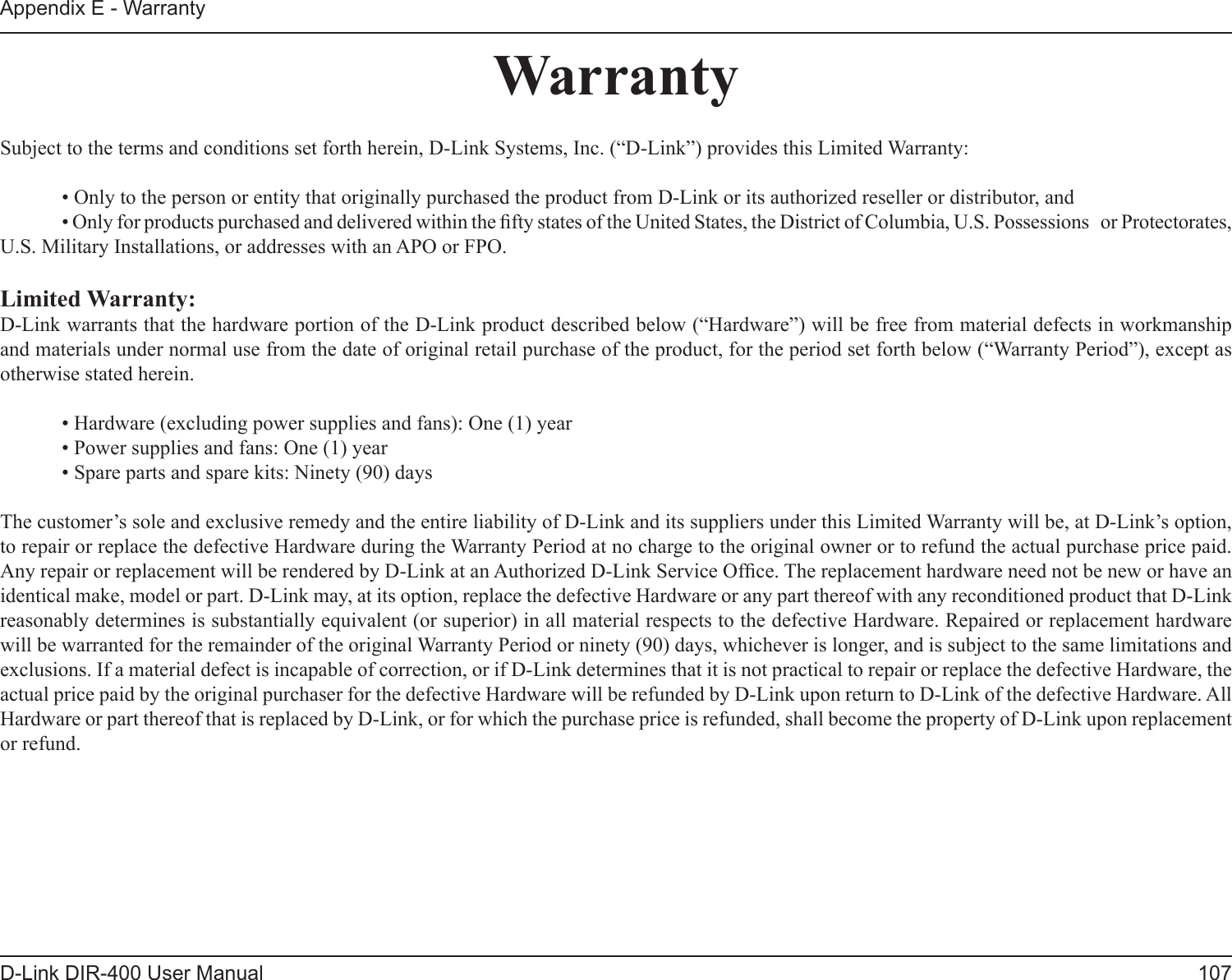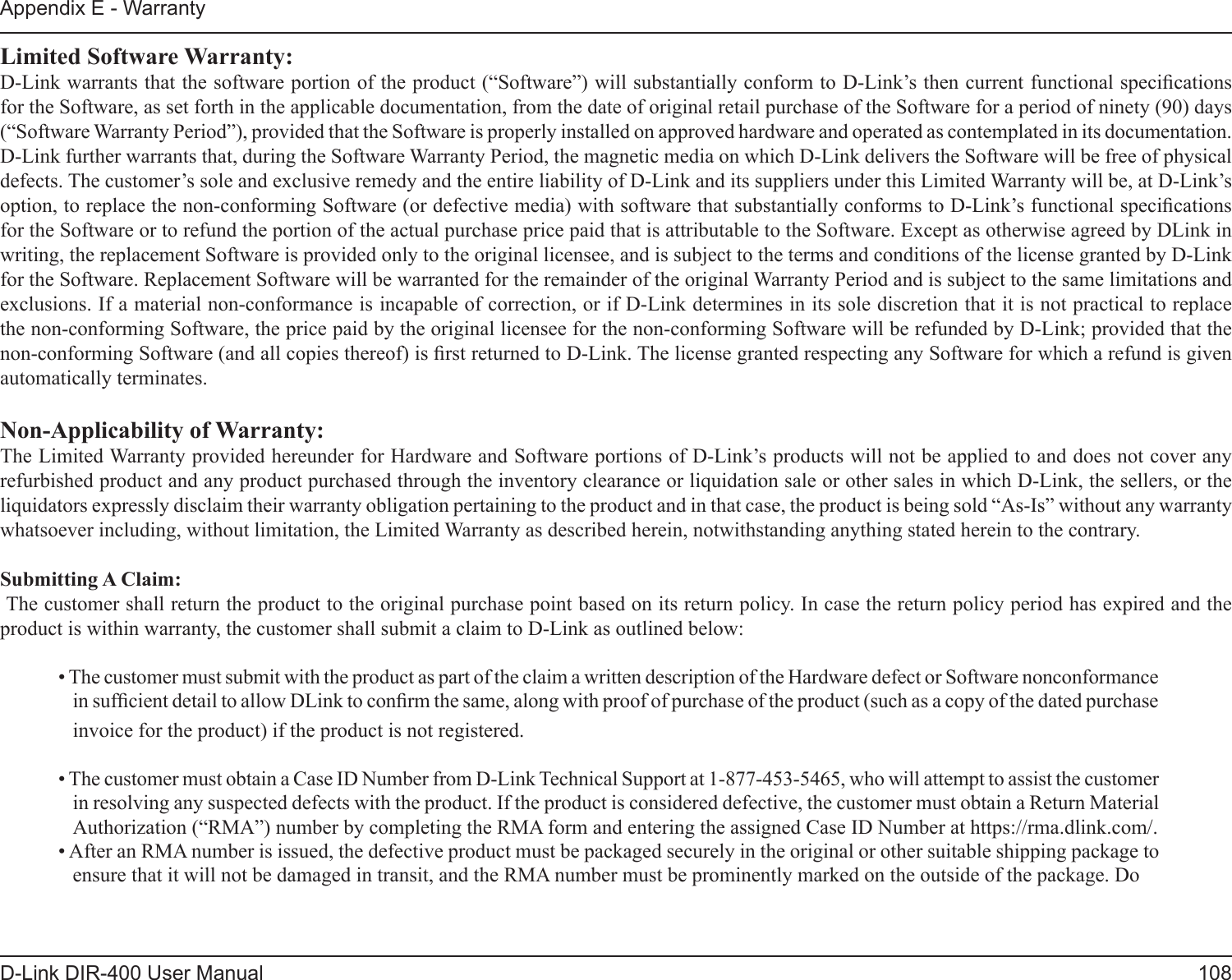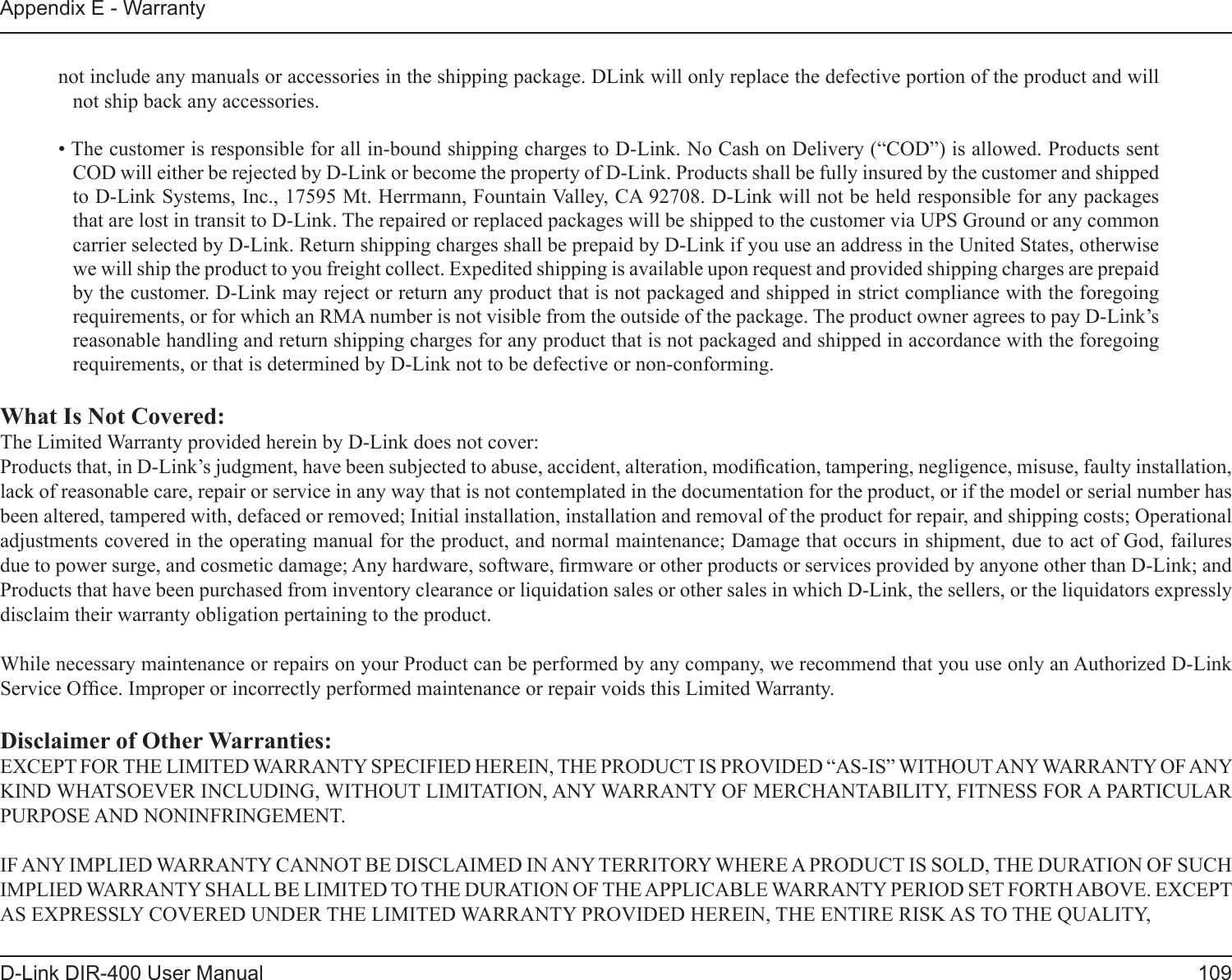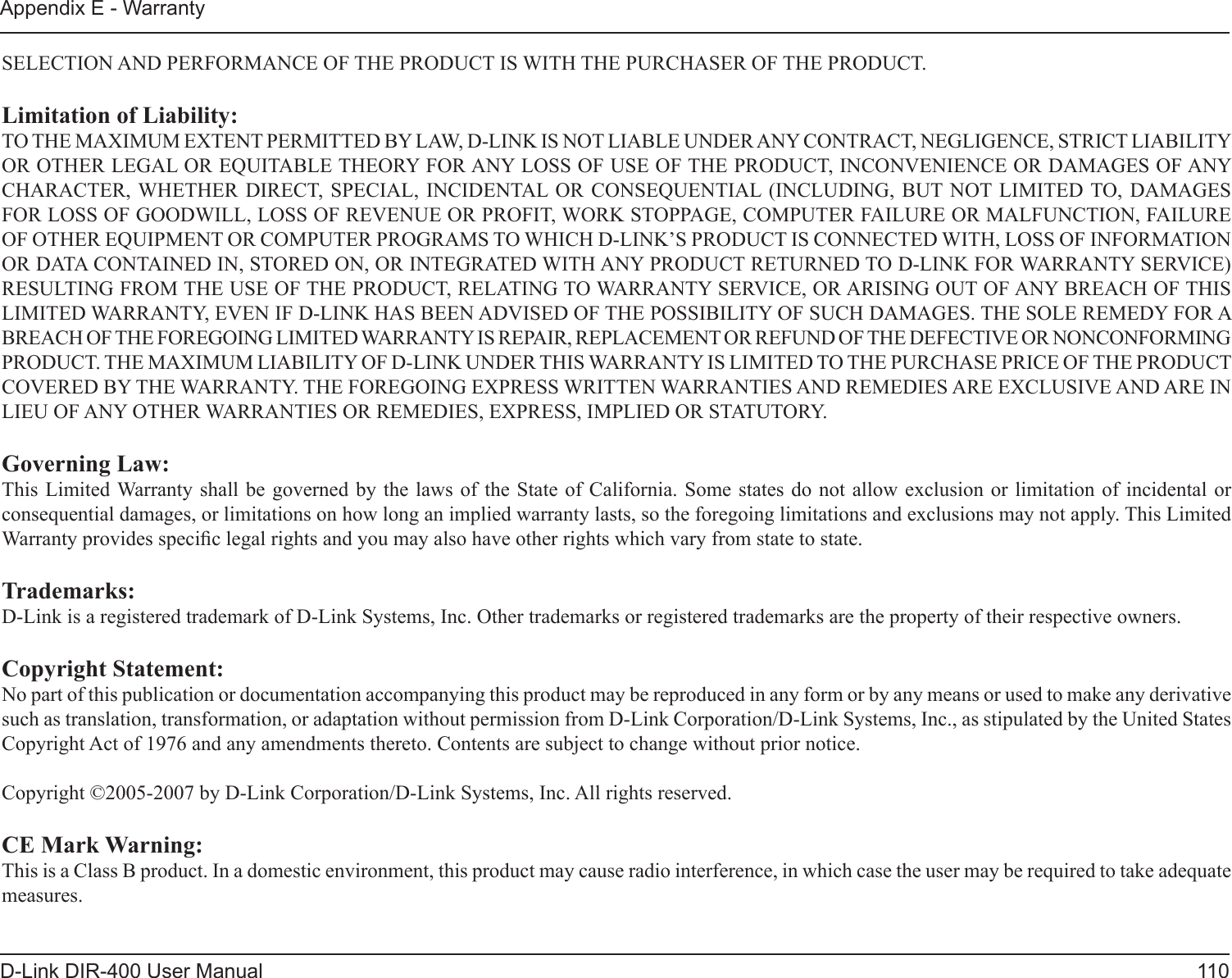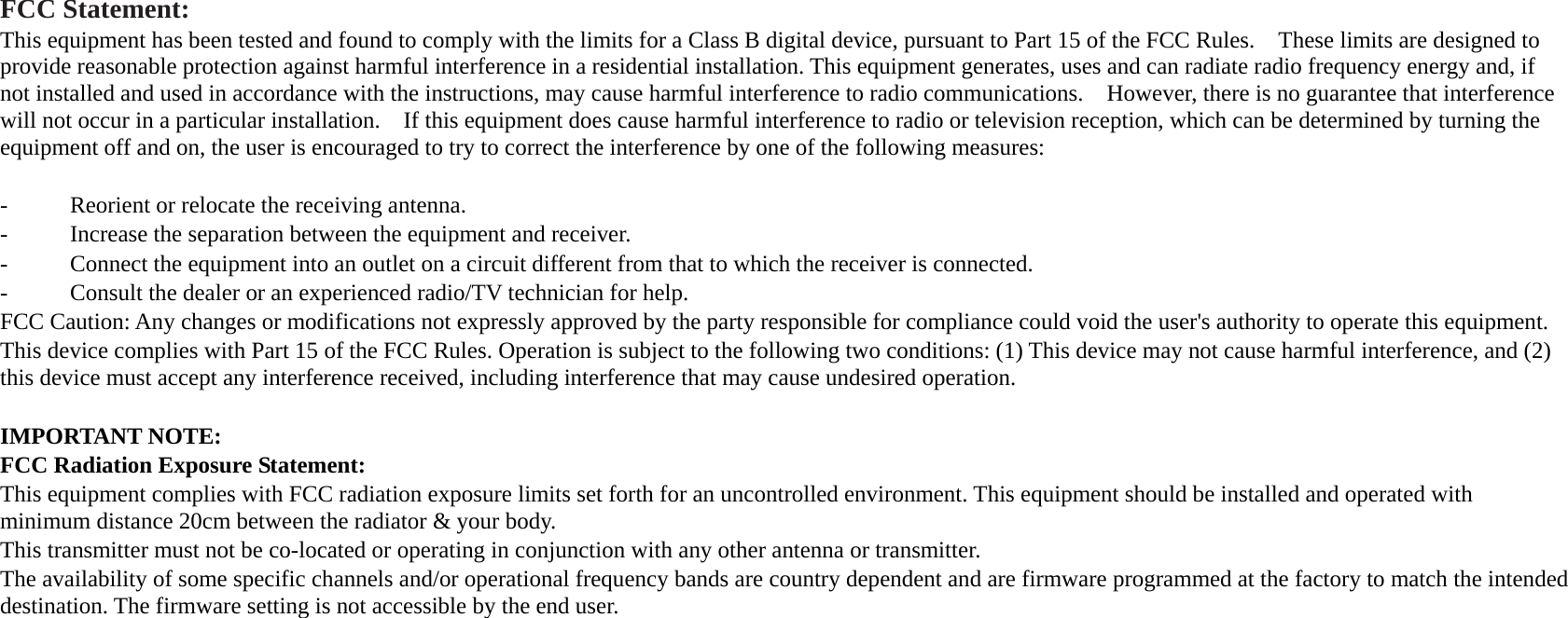D Link IR400A1 RangeBooster G Router User Manual Manual Part 5
D Link Corporation RangeBooster G Router Manual Part 5
D Link >
Contents
- 1. Manual Part 1
- 2. Manual Part 2
- 3. Manual Part 3
- 4. Manual Part 4
- 5. Manual Part 5
Manual Part 5
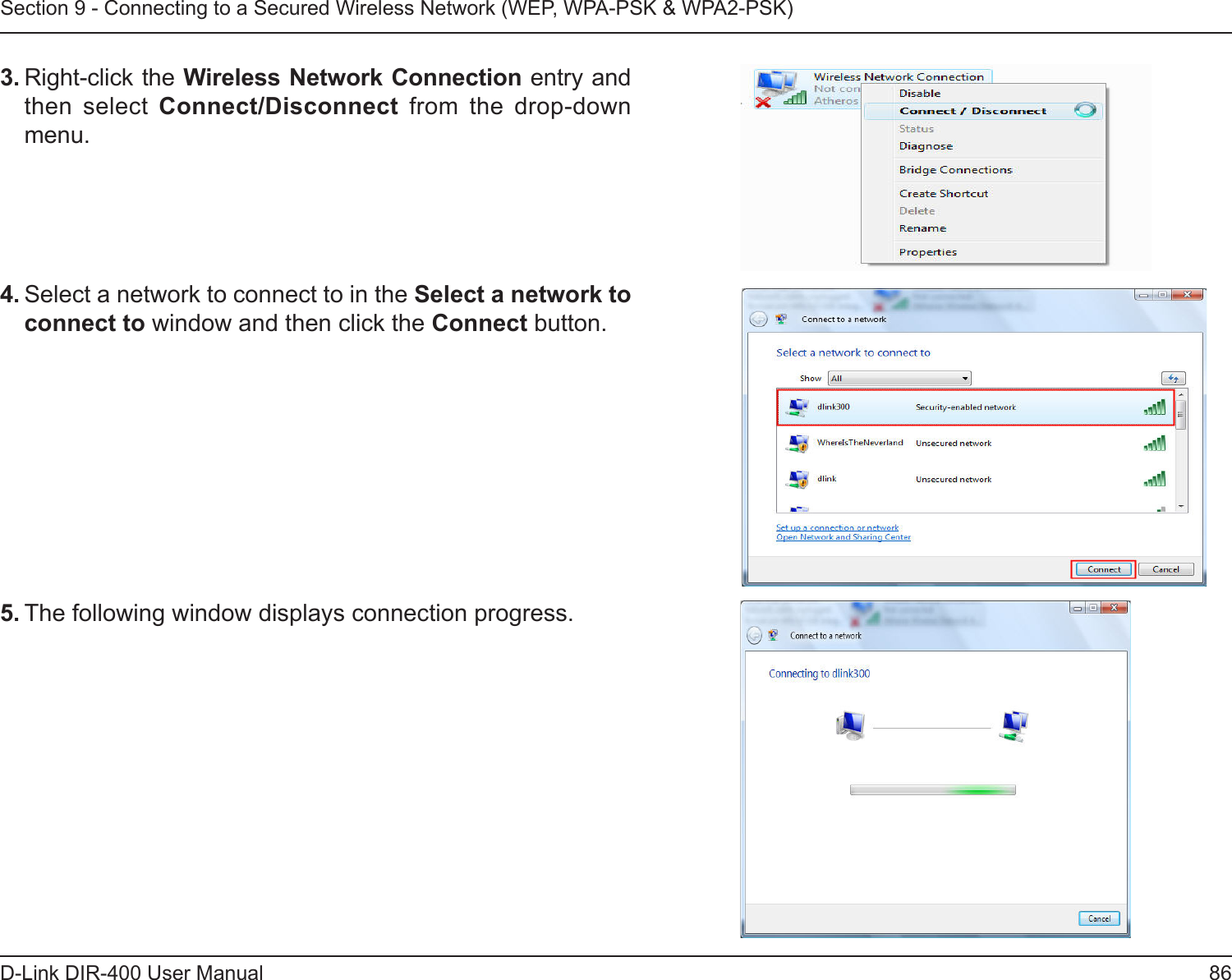
![87D-Link DIR-400 User ManualSection 9 - Connecting to a Secured Wireless Network (WEP, WPA-PSK & WPA2-PSK)7. The following Successfully connected to [SSID name] window is displayed. Choose to save to the network and/or Start this new connection automatically. When you are nished, click the Close button. 8. The successful connection is displayed at the bottom of the Windows start up menu. 6. Enter the network security key or passphrase for the router in the textbox provided in the Type the network security key or passphrase for [SSID name] window. When you are nished, click the Connect button.](https://usermanual.wiki/D-Link/IR400A1.Manual-Part-5/User-Guide-832621-Page-2.png)
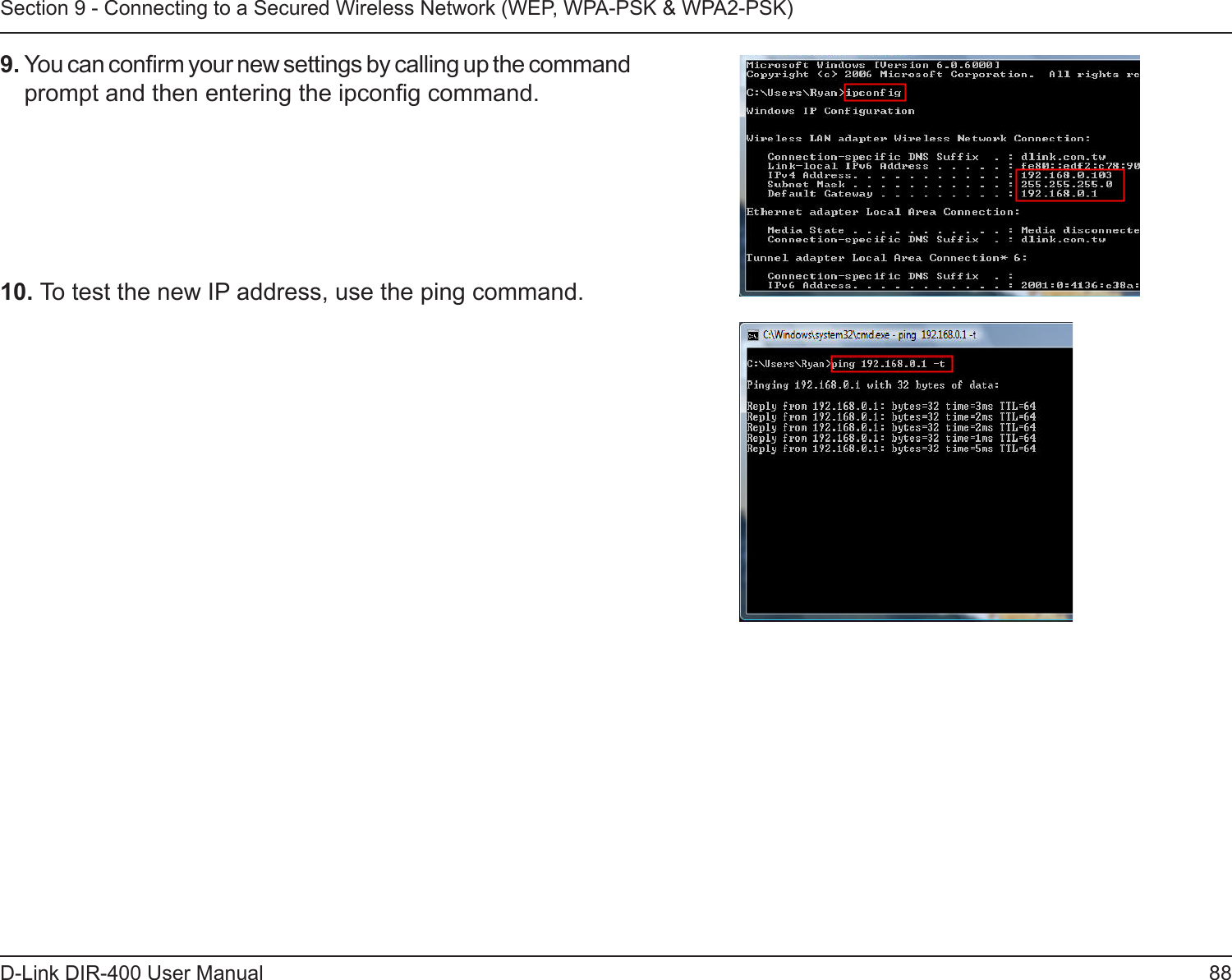
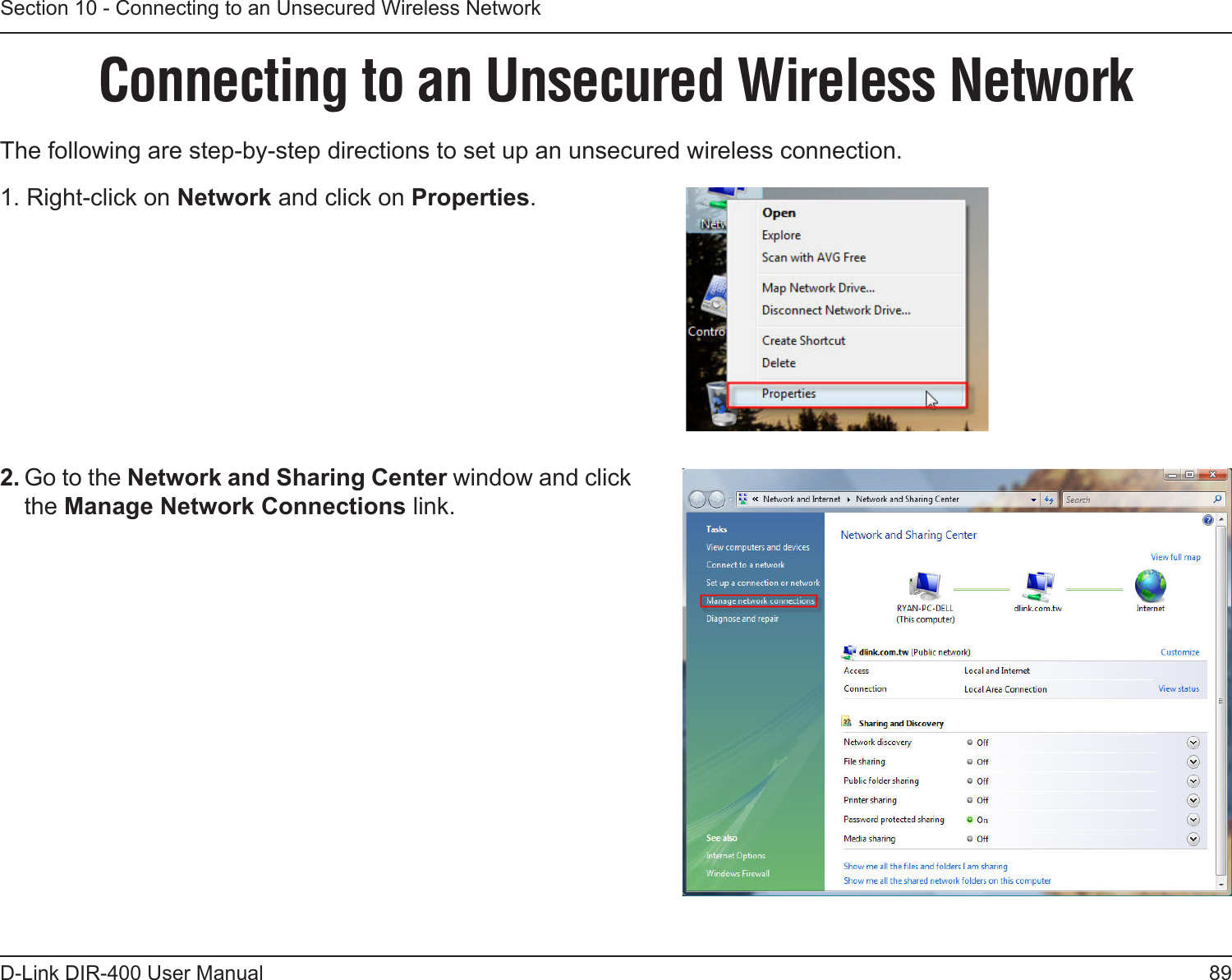
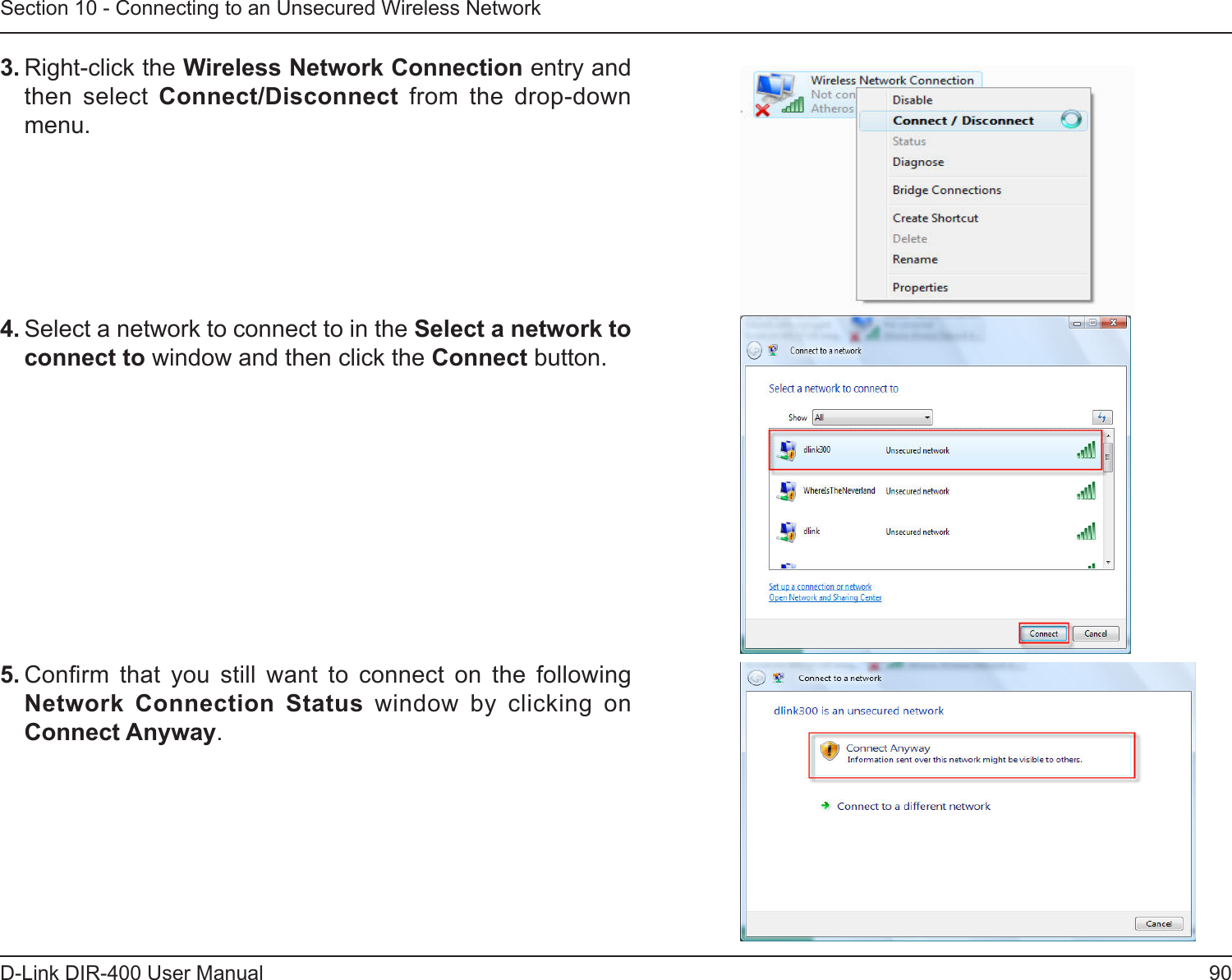
![91D-Link DIR-400 User ManualSection 10 - Connecting to an Unsecured Wireless Network6. The following Connect to a network wizard window displays the connection progress. 7. The following Successfully connected to [SSID name] window is displayed. Choose to save to the network and/or start the new connection automatically. When you are nished, click the Close button. 8. The successful connection is displayed at the bottom of the Windows start up menu.](https://usermanual.wiki/D-Link/IR400A1.Manual-Part-5/User-Guide-832621-Page-6.png)
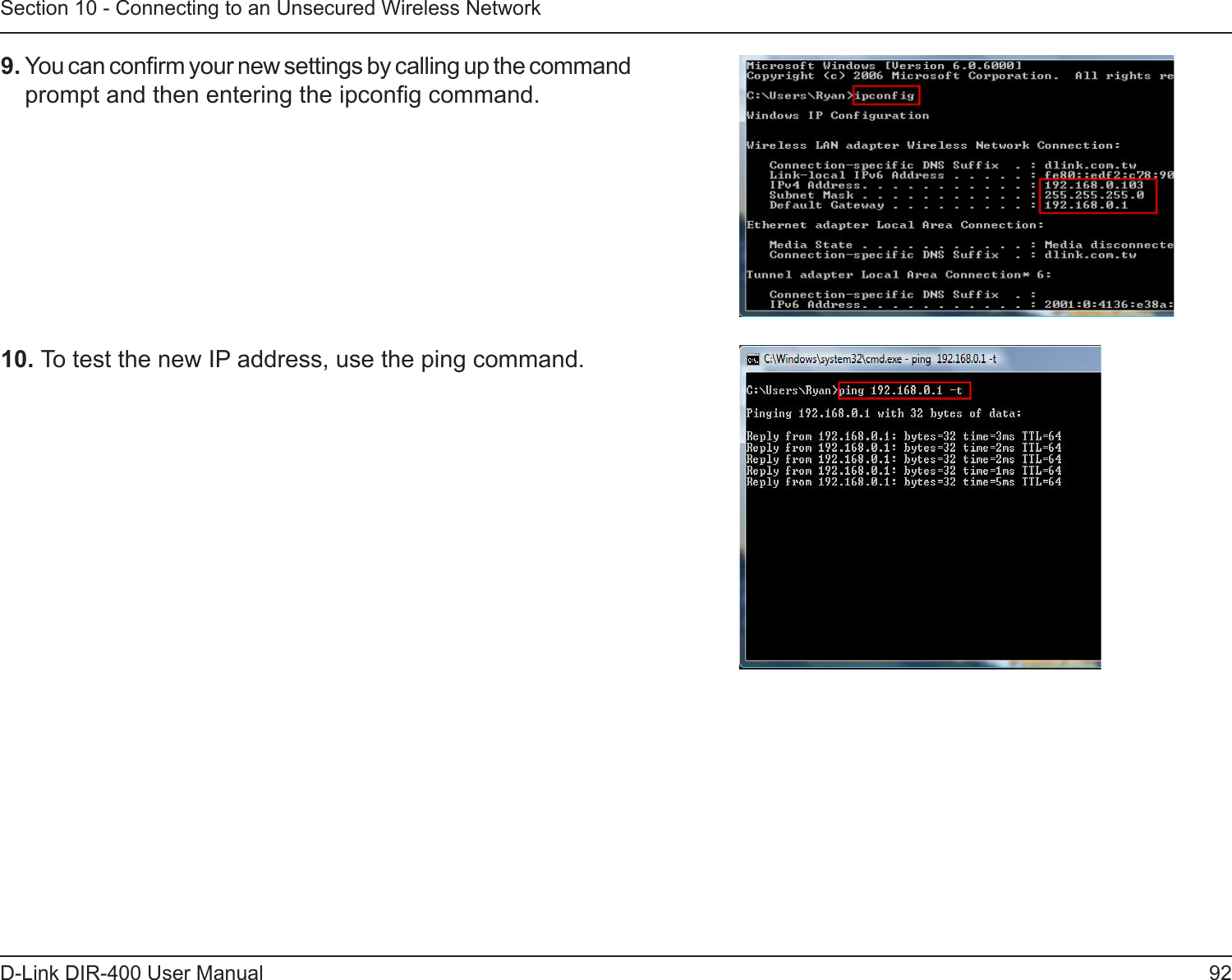
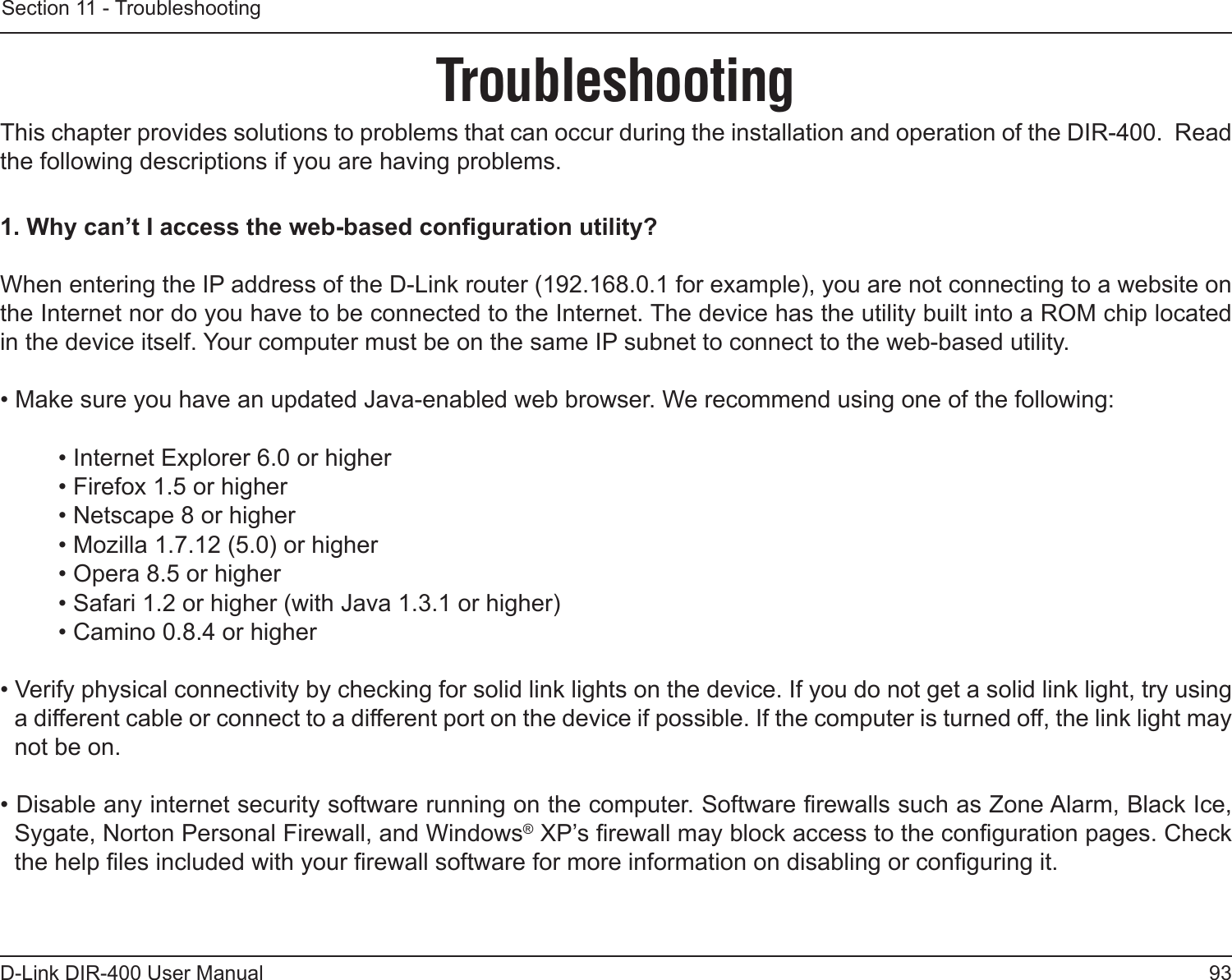
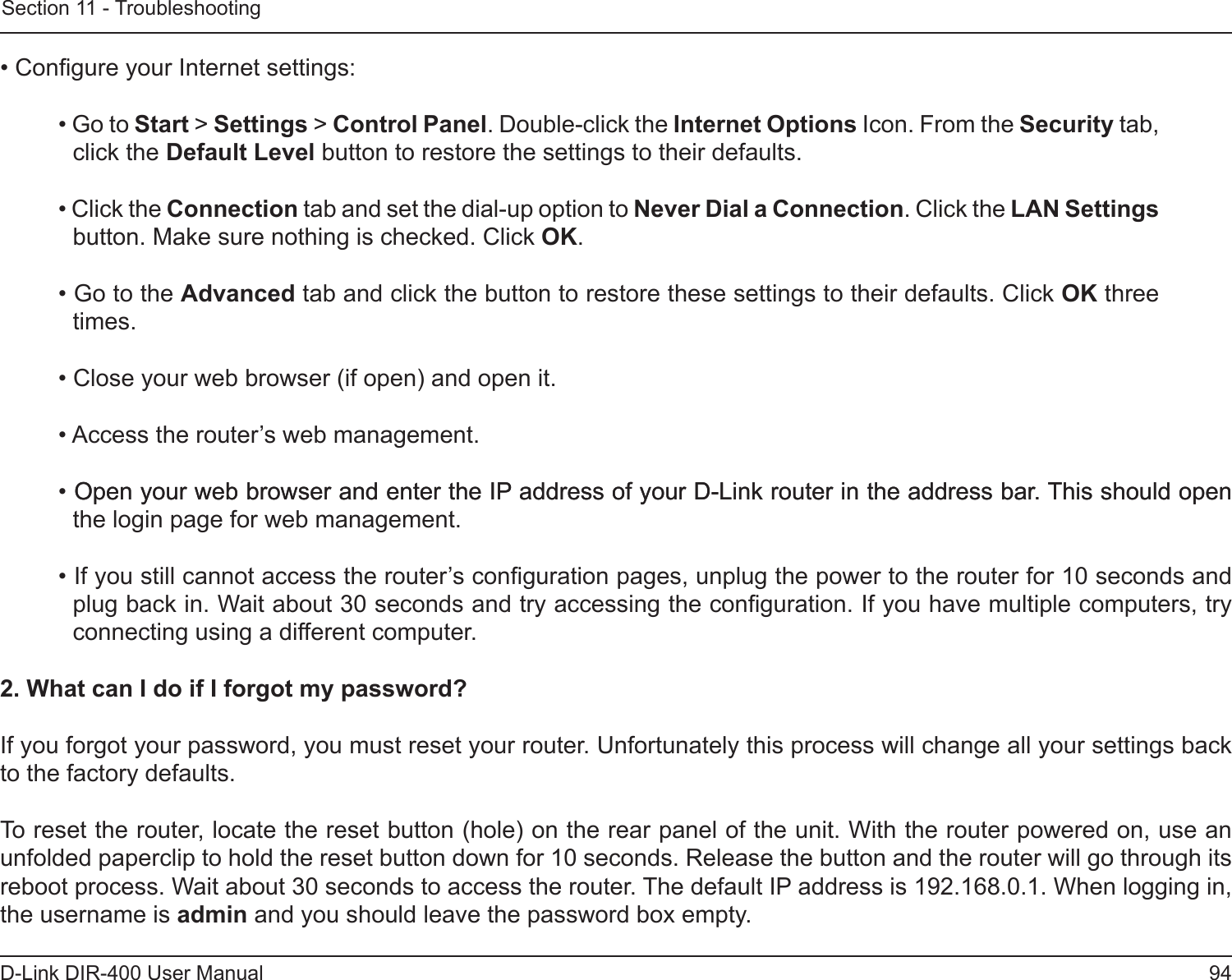
![95D-Link DIR-400 User ManualSection 11 - Troubleshooting3. Why can’t I connect to certain sites or send and receive emails when connecting through my router? If you are having a problem sending or receiving email, or connecting to secure sites such as eBay, banking sites, and/or Hotmail, we suggest gradually lowering the MTU in increments of ten (Ex. 1492, 1482, 1472, etc). Note: AOL DSL+ users must use MTU of 1400. To nd the proper MTU Size, you’ll have to do a special ping of the destination you’re trying to go to. A destination could be another computer, or a URL. • Click on Start and then click Run. • Type in command and press Enter (or click OK). • Once the window opens, you’ll need “ping” a URL. Use the following syntax: ping [url] [-f] [-l] [MTU value] Example: ping yahoo.com -f -l 1472](https://usermanual.wiki/D-Link/IR400A1.Manual-Part-5/User-Guide-832621-Page-10.png)
